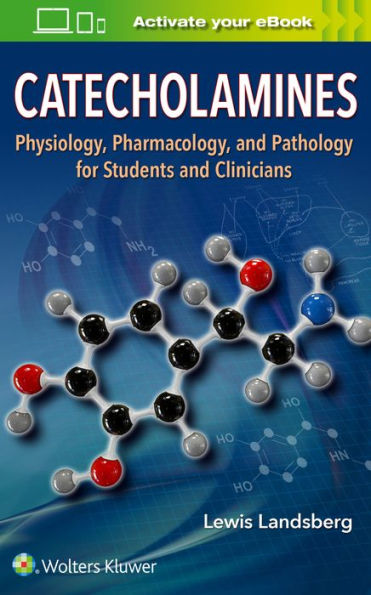Catecholamines: Physiology, Pharmacology, and Pathology for Students and Clinicians
Comprehensive and clinically relevant, this monograph provides an authoritative summary of how catecholamines regulate bodily functions in health and in disease, and how this knowledge has spawned an extensive pharmacopeia of widely used drugs. Renowned researcher and educator Dr. Lewis Landsberg offers solid information and guidance on these complex hormones, brought together in a single-source reference that helps both students and clinicians fully understand catecholamines and the sympathoadrenal system.Key Features
1133507187
- Covers fundamental aspects of catecholamine biology, as well as physiology, pathophysiology, pharmacology, and tumors of the sympathoadrenal system.
- Provides easily understood, concise coverage of difficult concepts, all in one convenient volume.
- Ideal for medical and graduate students and educators, as well as clinicians in internal medicine, cardiology, endocrinology, critical care, anesthesiology, and pharmacology.
- The ability to download the eBook on multiple devices at one time, for a seamless reading experience online or offline
- Powerful search tools and smart navigation cross-links that allow you to search within this book, or across your entire library of VitalSource eBooks
- Multiple viewing options that enable you to scale images and text to any size without losing page clarity as well as responsive design
- The ability to highlight text and add notes with one click
Catecholamines: Physiology, Pharmacology, and Pathology for Students and Clinicians
Comprehensive and clinically relevant, this monograph provides an authoritative summary of how catecholamines regulate bodily functions in health and in disease, and how this knowledge has spawned an extensive pharmacopeia of widely used drugs. Renowned researcher and educator Dr. Lewis Landsberg offers solid information and guidance on these complex hormones, brought together in a single-source reference that helps both students and clinicians fully understand catecholamines and the sympathoadrenal system.Key Features
- Covers fundamental aspects of catecholamine biology, as well as physiology, pathophysiology, pharmacology, and tumors of the sympathoadrenal system.
- Provides easily understood, concise coverage of difficult concepts, all in one convenient volume.
- Ideal for medical and graduate students and educators, as well as clinicians in internal medicine, cardiology, endocrinology, critical care, anesthesiology, and pharmacology.
- The ability to download the eBook on multiple devices at one time, for a seamless reading experience online or offline
- Powerful search tools and smart navigation cross-links that allow you to search within this book, or across your entire library of VitalSource eBooks
- Multiple viewing options that enable you to scale images and text to any size without losing page clarity as well as responsive design
- The ability to highlight text and add notes with one click
57.99
Out Of Stock
5
1

Catecholamines: Physiology, Pharmacology, and Pathology for Students and Clinicians
156
Catecholamines: Physiology, Pharmacology, and Pathology for Students and Clinicians
156Related collections and offers
57.99
Out Of Stock

Product Details
| ISBN-13: | 9781496375315 |
|---|---|
| Publisher: | LWW |
| Publication date: | 06/13/2017 |
| Edition description: | First |
| Pages: | 156 |
| Product dimensions: | 5.00(w) x 7.90(h) x 0.40(d) |
About the Author
From the B&N Reads Blog
